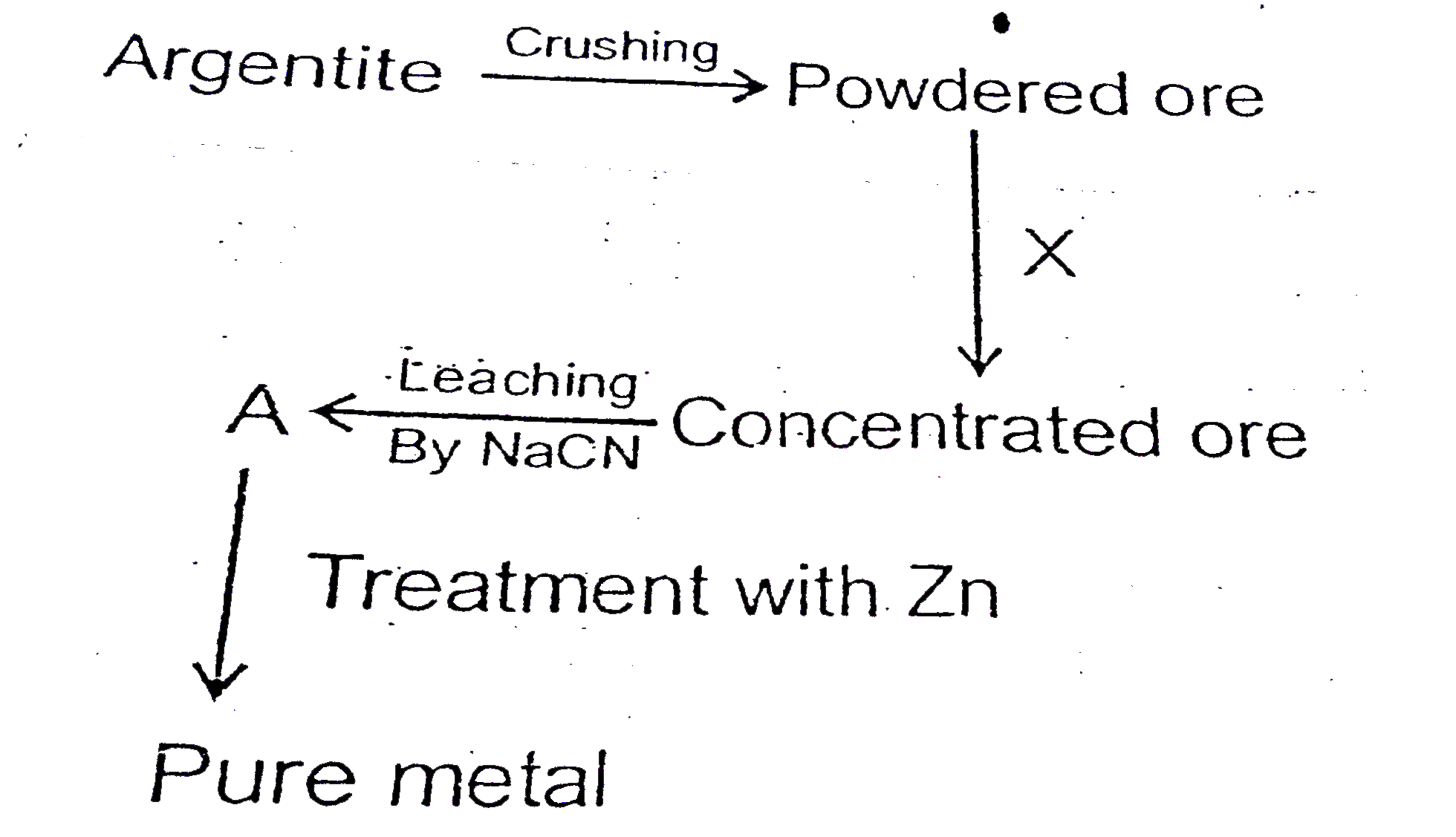What type of ores concentrated by electromagnetic separation ? Give three examples of such ores.
Step-by-Step Solution:
1. Understanding Electromagnetic Separation:
Electromagnetic separation is a method used to concentrate ores based on their magnetic properties. This technique is effective when one component of the ore is magnetic while the other is non-magnetic.
2. Identifying the Type of Ores:
The ores that can be concentrated using electromagnetic separation typically contain a magnetic mineral that can be separated from non-magnetic impurities.
3. Examples of Ores Concentrated by Electromagnetic Separation:
- Example 1: Tin (Sn) + Iron(III) Oxide (Fe2O3): In this case, Fe2O3 is magnetic, while tin is not. This allows for the separation of tin from the iron oxide.
- Example 2: Manganese (Mn) + Hematite (Fe2O3): Hematite is magnetic, and manganese is non-magnetic, making it possible to separate manganese from hematite.
- Example 3: Chromium (Cr) + Magnetite (Fe3O4): Magnetite is magnetic, while chromium is not, allowing for the concentration of chromium from magnetite.
4. Conclusion:
The ores that can be concentrated by electromagnetic separation are those where one component exhibits magnetic properties while the other does not. The three examples provided are:
- Tin + Iron(III) Oxide
- Manganese + Hematite
- Chromium + Magnetite
Electromagnetic separation is a method used to concentrate ores based on their magnetic properties. This technique is effective when one component of the ore is magnetic while the other is non-magnetic.
The ores that can be concentrated using electromagnetic separation typically contain a magnetic mineral that can be separated from non-magnetic impurities.
- Example 1: Tin (Sn) + Iron(III) Oxide (Fe2O3): In this case, Fe2O3 is magnetic, while tin is not. This allows for the separation of tin from the iron oxide.
- Example 2: Manganese (Mn) + Hematite (Fe2O3): Hematite is magnetic, and manganese is non-magnetic, making it possible to separate manganese from hematite.
- Example 3: Chromium (Cr) + Magnetite (Fe3O4): Magnetite is magnetic, while chromium is not, allowing for the concentration of chromium from magnetite.
The ores that can be concentrated by electromagnetic separation are those where one component exhibits magnetic properties while the other does not. The three examples provided are:
- Tin + Iron(III) Oxide
- Manganese + Hematite
- Chromium + Magnetite
Topper's Solved these Questions
- BOOK - PRADEEPCHAPTER - GENERAL PRINCIPLES AND PROCESSES OF ISOLATION OF ELEMENTS EXERCISE - Curiosity Questions2videos
GENERAL PRINCIPLES AND PROCESSES OF ISOLATION OF ELEMENTS
- BOOK - PRADEEPCHAPTER - GENERAL PRINCIPLES AND PROCESSES OF ISOLATION OF ELEMENTS EXERCISE - COMPETITION FOCUS (JEE(Main and Advanced)/MEDICAL ENTRANCE SPECIAL) VII. ASSERTION-REASON TYPE QUESTIONS TYPE - II9videos
GENERAL PRINCIPLES AND PROCESSES OF ISOLATION OF ELEMENTS
- BOOK - PRADEEPCHAPTER - ELECTROCHEMISTRYEXERCISE - IMPORTANT QUESTIONS FOR BOARD EXAMINATION25videos
ELECTROCHEMISTRY
- BOOK - PRADEEPCHAPTER - HALOALKANES AND HALOARENESEXERCISE - IMPORTANT QUESTIONS FOR BOARD EXAMINATION22videos
HALOALKANES AND HALOARENES
Similar Questions
Knowledge Check
- Question 1 - Select One
Iron ore is concentrated by
Afroth floationBelectrolysisCroastingDmagnetic treatment - Question 2 - Select One
Iron ore is concentrated by
AFroth floatationBElectrolysisCRoastingDMagnetic treatement - Question 3 - Select One
Galena ore is concentrated by
Agravity separationBfroth floatation processCmagnetic separationDroasting

This ore is concentrated byView SolutionWhat type of ores can be concentrated by magnetic separation method ?
View SolutionWhat type of ores are roasted?
View SolutionWhich of the following ores is not concentrated by electromagnetic separation?
View SolutionBauxite ore is concentrated by
View Solution

